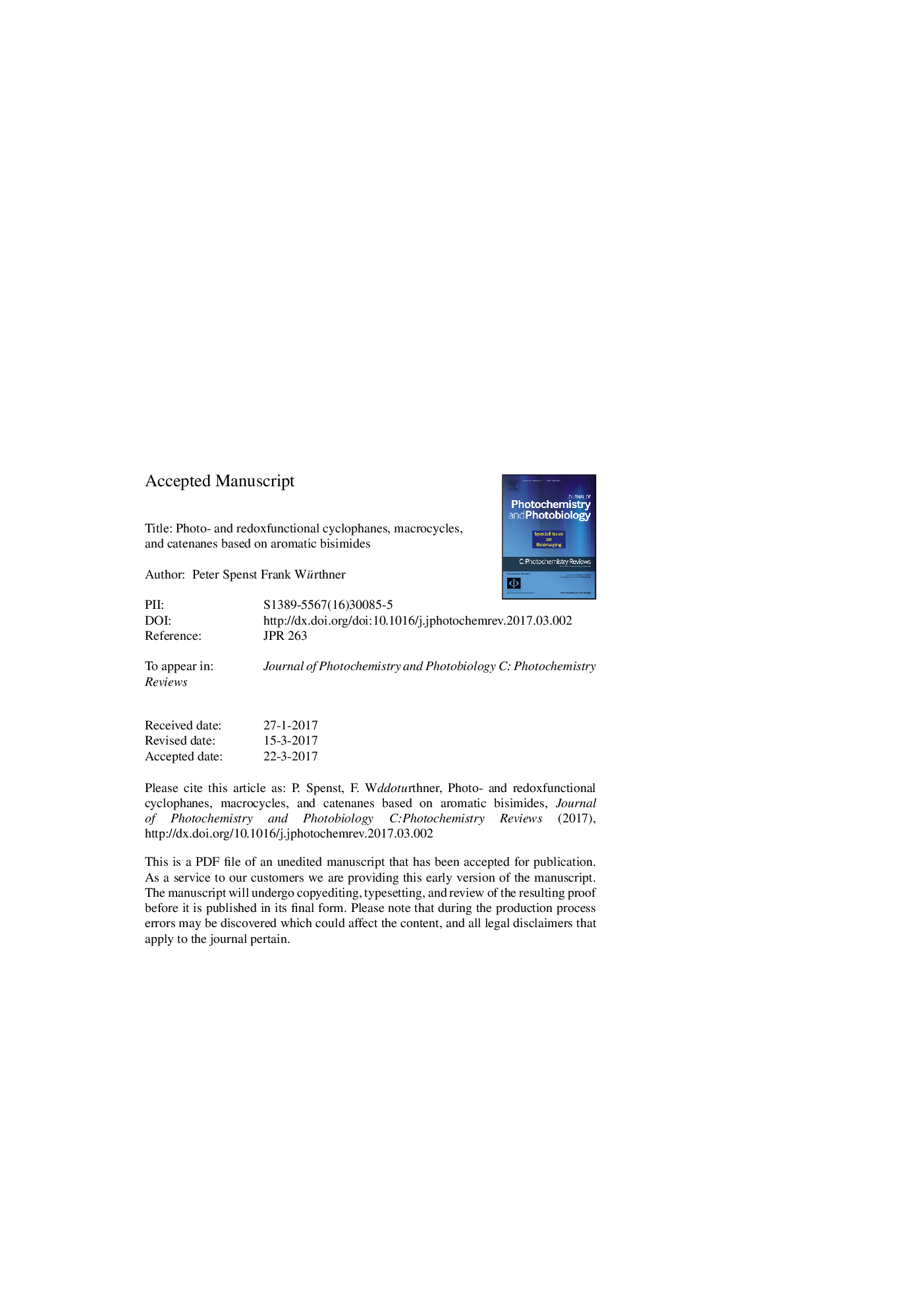| کد مقاله | کد نشریه | سال انتشار | مقاله انگلیسی | نسخه تمام متن |
|---|---|---|---|---|
| 4754750 | 1418270 | 2017 | 59 صفحه PDF | دانلود رایگان |
عنوان انگلیسی مقاله ISI
Photo- and redoxfunctional cyclophanes, macrocycles, and catenanes based on aromatic bisimides
دانلود مقاله + سفارش ترجمه
دانلود مقاله ISI انگلیسی
رایگان برای ایرانیان
کلمات کلیدی
موضوعات مرتبط
مهندسی و علوم پایه
مهندسی شیمی
بیو مهندسی (مهندسی زیستی)
پیش نمایش صفحه اول مقاله

چکیده انگلیسی
Aromatic bis(dicarboximides), abbreviated as bisimides or diimides, are interesting building blocks for the construction of electro- and photofunctional architectures. The possibility of reversible reduction of aromatic molecules equipped with imide units at modest redox potentials between about â1.3 and â1.0Â V vs. the ferrocenium/ferrocene redox couple could be exploited by a broad variety of electroactive cyclophanes, macrocycles and catenane scaffolds to direct molecular motions by charging the systems with electrons. Whilst most of the work in this field has been accomplished for the smaller pyromellitic (PyBI) and naphthalene bisimides (NBI), the larger perylene bisimides (PBI) offered an entry into the field of photofunctional systems. Here cyclophanes with closely stacked PBI units provided insight into exciton coupling in homo and hetero dye dimers or ultrafast loss of coherence of the initially populated exciton states to give excimers or symmetry-broken charge separated states. In contrast, for PBI cyclophanes with larger cavities guest encapsulation could efficiently modulate the photophysical properties to give highly fluorescent host-guest complexes upon incorporation of electron-poor aromatic guest molecules or fully quenched systems upon incorporation of electron-rich molecules. For larger PBI macrocycles energy transfer processes could be investigated as well as the solvent-templated folding into double string ropes with high sensitivity (absorption, fluorescence) for the specific aromatic solvents. Finally, with a metallosupramolecular approach larger macrocycles (e.g. squares and hexagons) and cages (e.g. tetrahedrons) became accessible which could be exploited to study a variety of electro- and photophysical processes.
ناشر
Database: Elsevier - ScienceDirect (ساینس دایرکت)
Journal: Journal of Photochemistry and Photobiology C: Photochemistry Reviews - Volume 31, June 2017, Pages 114-138
Journal: Journal of Photochemistry and Photobiology C: Photochemistry Reviews - Volume 31, June 2017, Pages 114-138
نویسندگان
Peter Spenst, Frank Würthner,